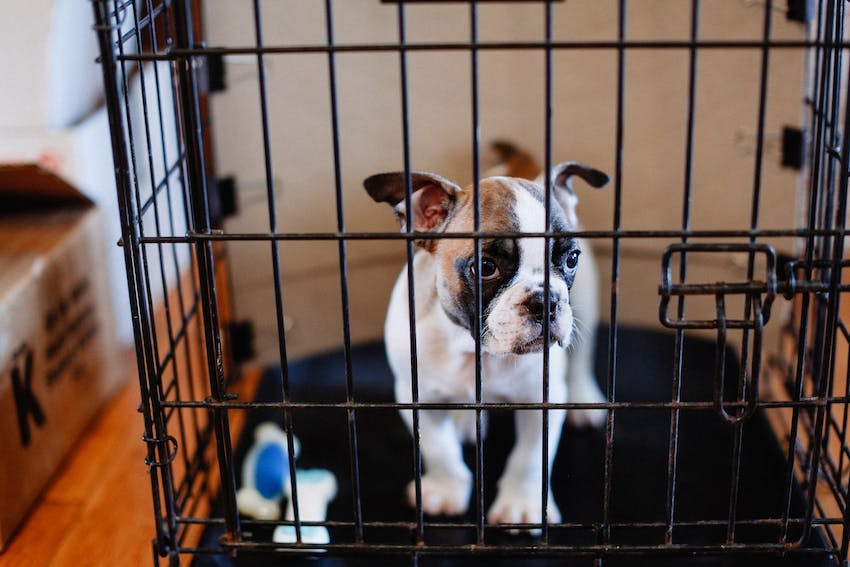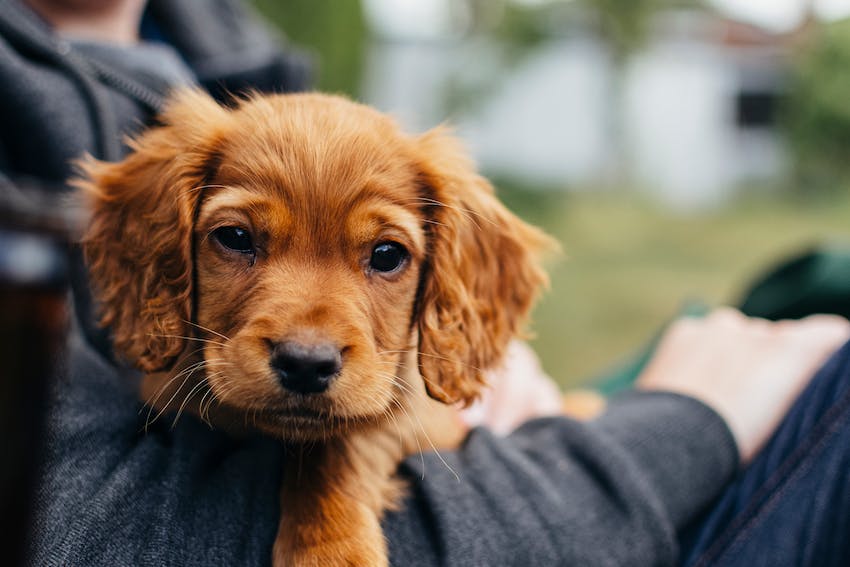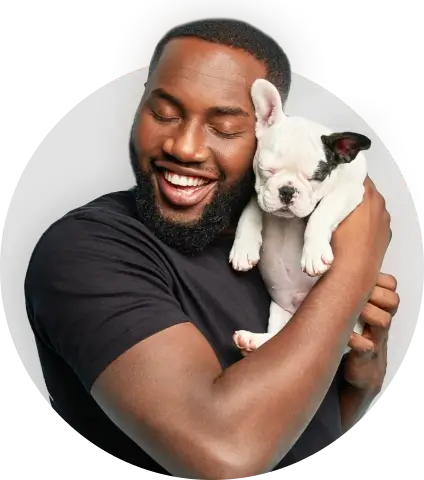How to Crate Train a Puppy
By: Kelli Rascoe / Published April 3, 2020
Having a new puppy in your home is a fun and exciting time! While a puppy is adorable and fun to play with, training your new best friend is beneficial as they grow and develop. Naturally, training is valuable for all dogs. Whether you are new to puppy ownership or have multiple dogs, learning how to crate train a puppy is a skill that helps the entire family. We sat down with Trupanion veterinarian Dr. Caroline Wilde to learn more about how to crate train a puppy and tips for successful puppy crate training for the future.
Puppies are adventurous, curious, and may want a cozy place to retreat to after a long day of play. Besides being a place to rest, a crate is helpful for everything from pet travel to potty training. Wilde breaks down the essential steps to help crate train your new best friend.
Steps to crate train a puppy
- Buy a crate that is just big enough for your puppy to stand up and turn around comfortably.
- Buy a blanket or a mat to place in the crate.
- Help your puppy get used to the crate by coaxing them with treats or toys to establish positive associations with the crate.
- Feed your puppy in the crate to provide more positive associations.
- Keep the door to the crate open at first to allow your puppy to freely go in and out. Once they are used to the crate, close the door and reward them with praise and treats. Then, let your puppy out of the crate. Repeat this often while gradually increasing the amount of time spent in the crate.
- Encourage your puppy to sleep in the crate. If your puppy wakes you up crying, they should be immediately taken outside to go to the bathroom and put back inside of their crate.
- Take your puppy directly from their crate to the yard or on a walk and keep them outside until they use the bathroom. Puppies need to go to the bathroom fairly frequently and should be taken out as often as possible, generally every 2-3 hours to start for younger puppies.
- Reward your puppy immediately with praise and pats when they go to the bathroom outside. If they do not go to the bathroom, they should be placed back in the crate for a short period of time and then taken out again. They should only be given free reign again until after they use the bathroom.
- Never punish your puppy when they have an accident. If you observe them the bathroom inside, the puppy should be immediately interrupted with a loud noise, then taken outside to finish.
Take your time with your puppy
Each puppy is different. It may take time for your new furry friend to become accustomed to their new space. Naturally, training doesn’t happen overnight, but by using positive reinforcement and having patience, your best friend will gradually learn over time. At the same time, you’re learning as well!
The benefits of crate training a puppy
Puppies are mischievous, energetic, and may get into things they shouldn’t. Alternatively, a crate may help avoid any unexpected situations while you’re away.
"Crate training can be an efficient way to housebreak a puppy. Also, crate training can give the puppy a “safe place” to go where they feel secure and comfortable. Further, this can help the puppy be at ease when they need to be crated for confinement purposes, like when leaving the house for a period of time, or when you have company over,” points out Wilde.
For an additional resource on the benefits of crate training, read here.
Tips for how to crate train a puppy
So now that you’ve gotten your puppy in the crate, now what? Wilde dives in on tips for successful crate training whether you are on the first day or last day of training.
- Take your puppy outside as often as you can, and always reward them for going in the correct place.
- Ensure the crate is the appropriate size for your pup. If it is too small, that can cause stress and anxiety for your pet, and if it is too big, your puppy may be more likely to go to the bathroom in the crate.
- Watch your puppy carefully for cues that they need to go to the bathroom.
For instance, they will often sniff around, wander away, or circle. When you notice these signs, stop what you are doing and immediately take them outside. Further, your puppy should not be unsupervised during the early stages as they will often wander off to go to the bathroom.
Never put your puppy in the crate as a punishment. Being in the crate should always be a positive experience.You may need to buy bigger crates as your puppy gets bigger, or section off a larger crate.Sometimes placing the crate in a dark room or quiet place can help your puppy settle down.If your puppy is having accidents in the crate, consider whether the crate is appropriate and consider taking your puppy out more frequentlyThe crate should be left open, so they can go in and out as they please. When your dog has been successfully crate trained, they often will seek their crate as a resting place, or for comfort.Don’t reach in to pull your dog out of their crate. Coax them out by calling them or coaxing them with toys or treats.For more on how to get your puppy on a potty training schedule, read here.
The importance of positive interaction
Interacting and playing with your puppy is a wonderful way to solidify the human-pet bond. Without a doubt, the relationship between you and your pet is special. The more you interact, engage, and play, the more your relationship will strengthen. The positive interactions are helpful during the training process, as the bond is starting to form. When you use positive reinforcement, your puppy will start to learn and trust while training.
Learning how to crate train a puppy may benefit the entire family
Crate training a puppy takes time, patience, and positivity. For the safety and wellness of your new family member, consider checking in with your veterinarian. They can help establish a training regime and help curb any unwanted behaviors. Further, your family can bond over the experience of training your new puppy.
To discover more on how to puppy train, read Five Recommended Puppy Training Tips.




